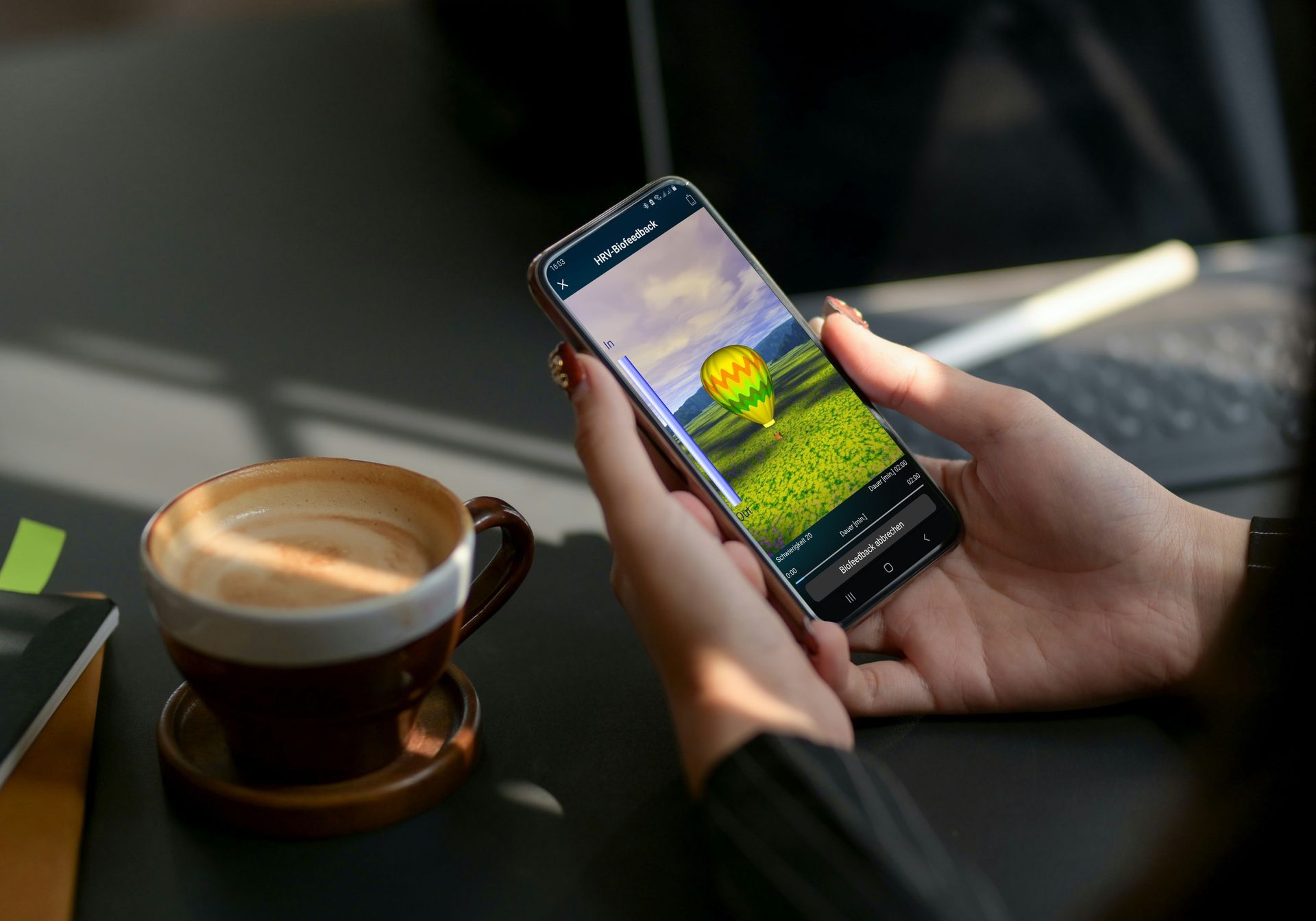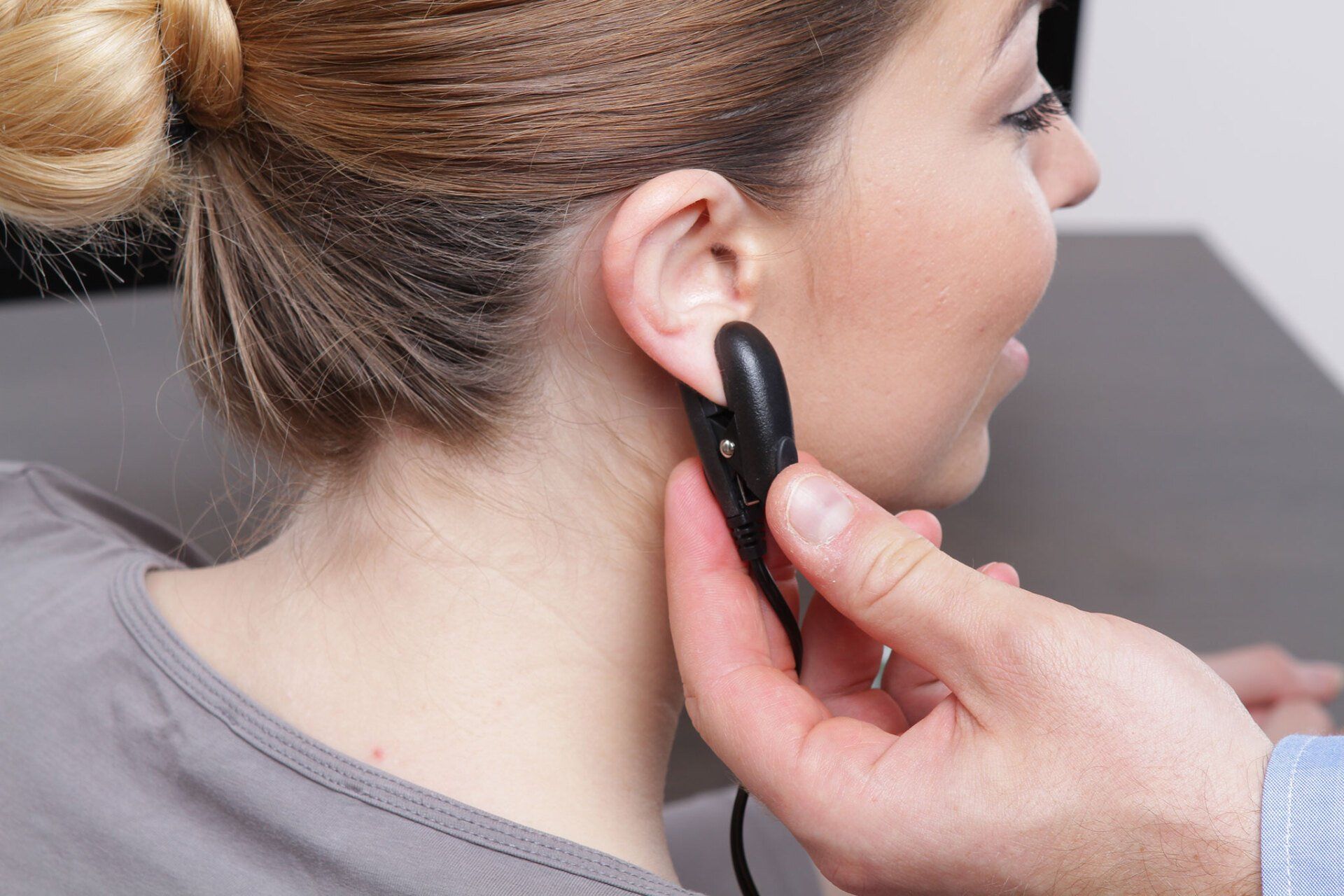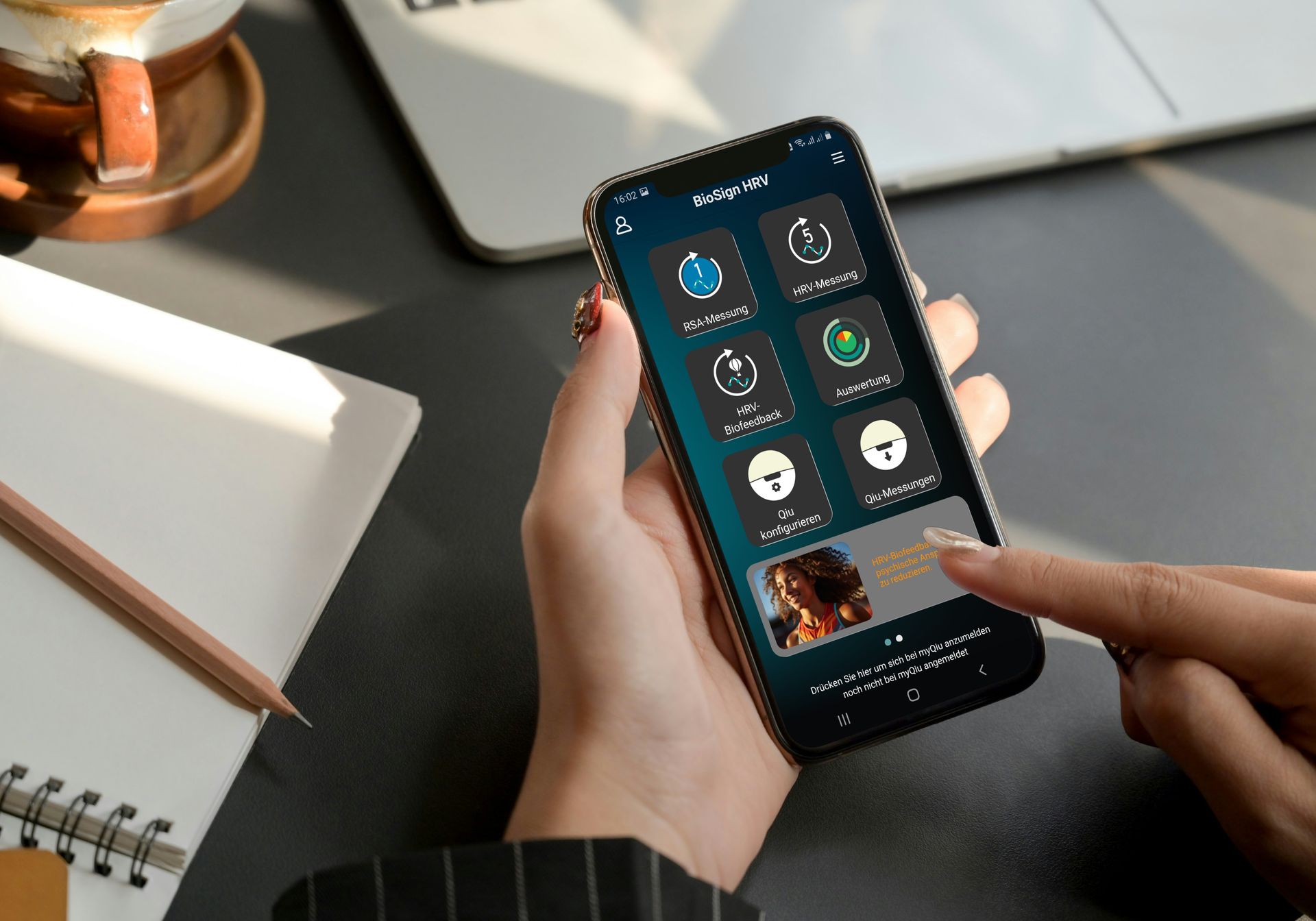App content:
FAQ (frequently asked questions) about the BioSign HRV app

On this page you will find answers and tips on frequently asked questions and problems that may arise when using the BioSign HRV app.
Please also read the manual included with the app (Manual for the BioSign HRV smartphone app) carefully. You can also find the manual in the app in the menu at the top right.
If you cannot find an answer to your problem or question on this page, please send us an email to support@biosign.de with a short description of your problem.
Fragen zum Kyto Heart Rate & HRV Sensor

How should I charge the Kyto sensor
- Before using the sensor for the first time, charge it on a USB cable for at least two hours.
- It takes about 2 hours to fully charge the battery.
- After use, disconnect the ear clip from the Kyto sensor, otherwise the battery will be used up unnecessarily.
Red LED lights up continuously
-> low battery voltage
Green LED lights up continuously
-> the battery is charging
Status display goes out completely
-> the battery is fully charged
How should I put on the ear clip?

- The ear clip should be placed on the left or right ear lobe as shown in the photo. If the sensor detects the heart rate well, the red LED flashes. As the sensor measures the blood flow in the skin, good blood circulation in the ear lobe is important. This can be reduced individually or, for example, in cold weather. You can improve blood circulation by rubbing the ear lobe between your index finger and thumb before putting on the ear clip.
What does the LED status indicator on the sensor mean
Red LED flashes
-> the heart rate is measured correctly
Red LED is constantly lit
-> low battery voltage
Green LED is constantly lit
-> the battery is charging
Status display goes out completely
-> the battery is fully charged
The app does not find my Kyto sensor or does not find it reliably
To ensure that the BioSign HRV app can find the Kyto sensor, please note the following points:
- The Kyto sensor must not be paired (connected) to the smartphone.
- The Kyto sensor must be sufficiently charged.
- The Bluetooth function on the Kyto sensor is only active if the sensor is worn correctly (red LED flashes). To do this, the ear clip must be plugged in and placed on the ear. If the heart rate is detected, the red LED flashes. For this to happen, there must be sufficient blood circulation in the earlobe. You can improve blood circulation by rubbing the earlobe between your index finger and thumb before putting on the ear clip.
- After a measurement, you should always remove the ear clip from the Kyto sensor, otherwise battery will be used up unnecessarily.
The signal from my Kyto sensor breaks off before the end of the measurement?
During longer measurements with an ear clip sensor, such as the Kyto sensor, it can happen that the blood flow to the earlobe decreases so much that the sensor can no longer detect the heart rate and stops the measurement. This is manifested by a heart rate signal interruption before the actual end of the measurement.
Possible causes:
- Reduction of blood pressure through relaxation: HRV biofeedback aims to promote relaxation. However, this desired effect can cause a reduction in blood pressure, which may be reflected in reduced blood flow to the earlobe.
- Pressure of the ear clip: The pressure exerted by the clip of the ear clip can hinder blood flow to the area where the clip rests.
Possible solutions:
- Promoting blood flow before the measurement: Rub the earlobe before putting on the ear clip to stimulate blood flow.
- Changing ears: If the ear clip exerts too much pressure, it can be switched to the other ear during biofeedback or measurement.
- Split measurement: Divide a longer biofeedback session of 20 minutes into two shorter sections of 10 minutes each so that the earlobe can be massaged or the clip can be changed between the sections.
- Alternative sensors: Use a sensor that displays the pulse wave curve in addition to the heart rate signal (e.g. Qiu+) in order to detect signal interruptions at an early stage.
Questions about the BioSign HRV app

How can I extend my myQiu access
BioSign Online ShopYou can extend your myQiu access with a prepaid license. You can buy this license in our online shop.
When you buy a myQiu license, you will receive a license code from us (e.g. on the invoice/delivery note or by email).
You must redeem this code in your myQiu account:
- In the BioSign HRV app, go to the "Manage myQiu account" symbol at the top left.
- Go to "LICENSE" and enter the new license code. Pressing "Redeem license code" activates the code for your account.
Why is the biofeedback or measurements not fully recorded
It can happen that during a measurement or biofeedback, the sensor suddenly no longer detects and sends a heart rate. In this case, you will receive a message from the app that no more heartbeats have been detected. In this case, you will see on the Kyto sensor that the red LED no longer flashes.
The reason for this could be:
- The sensor has run out of battery and is switching off.
- When using the Kyto sensor, the blood flow to the ear may be so weak that the heart rate can no longer be detected. This may be related to the desired activation of the parasympathetic nervous system and an associated reduction in blood pressure. Rubbing the earlobe between your index finger and thumb before the measurement can prevent this by increasing blood flow locally.
- When using a Polar belt (H7, H9, H10), the contact surfaces on the belt to the skin may be dry. Using electrode gel on the contact surfaces on the belt can prevent this.



